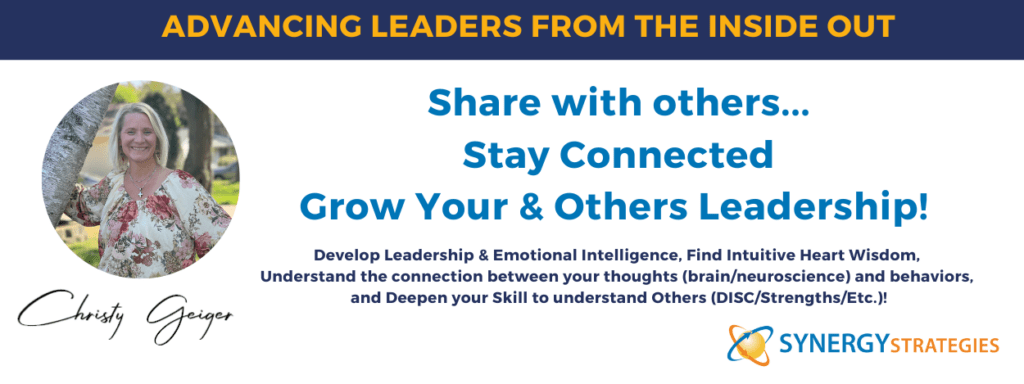In the high-pressure world of leadership and executive management, cognitive biases, or “thinking traps,” can cloud judgment and lead to suboptimal decision-making. These mental shortcuts offer an easy way to make sense of complex situations but often result in errors in judgment and biased decisions. Understanding these traps helps leaders spot flawed thinking and pause to find better solutions. This article explores 12 common thinking traps, their impacts, and strategies for overcoming them. At the end are two links for assessments that you can take to help understand the areas of which you should be most aware.
12 common thinking traps
THINKING TRAP #1: Always Being Right
This trap involves a leader’s need to always be correct, leading to defensiveness and a refusal to consider alternative viewpoints. This mindset can stifle innovation and discourage team members from providing valuable feedback. Leaders who insist on being right create a closed environment where constructive criticism is not welcomed, hindering growth and improvement. While it is natural to think we don’t have this issue, it’s important to consider where you might be doing this. Notice if you frequently argue to defend your position or dismiss others’ ideas without consideration. If you find yourself doing this, work to embrace a growth mindset. Encourage open dialogue and view mistakes as opportunities for learning rather than failures. To further develop the skill, practice active listening and seek feedback. Reflect on situations where you were wrong and how you could have approached them differently. The Thinking Trap of Always Being Right is often driven by the ego’s desire for validation and a sense of superiority. In being right, you may fail to make space for others’ perspectives, potentially causing frustration and alienation. By striving to understand others’ viewpoints and finding truth in their statements, you enhance your ability to collaborate and innovate beyond mere debates.
THINKING TRAP #2: Black-and-White Thinking
Black-and-white thinking involves viewing situations in extremes, with no middle ground. This mindset can lead to poor decision-making and an inability to appreciate the nuances of complex situations. It is problematic because it limits flexibility and prevents leaders from adapting to changing circumstances. While it might seem like a straightforward way to process information, it’s crucial to examine where you might be falling into this trap. Pay attention if you tend to see outcomes as entirely positive or negative without recognizing any gray areas. If this is a pattern for you, practice acknowledging and understanding the complexities in any situation. Engage with diverse perspectives to broaden your outlook. To develop this skill, participate in discussions that challenge your binary views and encourage critical thinking. The ego’s desire for clear-cut answers can drive black-and-white thinking, which often obstructs growth and effective decision-making. By embracing complexity and nuance, you foster better understanding and adaptability in your leadership approach.
THINKING TRAP #3: Catastrophizing
Catastrophizing involves expecting the worst possible outcome in every situation, even when it’s unlikely. This mindset can lead to unnecessary stress and impede effective decision-making by focusing too much on potential negatives. It becomes problematic because anticipating disaster can paralyze action and prevent leaders from addressing challenges proactively. Notice if you often worry about worst-case scenarios without concrete evidence. If this is a recurring issue, challenge your assumptions by evaluating the actual likelihood of negative outcomes. Develop contingency plans to manage potential risks. To further address this trap, use stress-reduction techniques such as mindfulness and cognitive restructuring. Catastrophizing is often driven by the ego’s fear of failure, which can lead to irrational anxiety and avoidance. By reframing your fears and preparing realistically, you can enhance your resilience and decision-making abilities.
THINKING TRAP #4: Emotional Reasoning
Emotional reasoning occurs when leaders allow their feelings to dictate their views of reality. This can lead to biased decision-making and may overlook objective facts or evidence. It becomes problematic as decisions based on emotions rather than facts can distort reality and undermine effective leadership. Reflect on whether your emotions are influencing your judgments and decisions. If you find this to be the case, focus on separating emotions from facts and consider evidence and logical reasoning. Develop the skill of emotional regulation by practicing mindfulness and using evidence-based decision-making approaches. Emotional reasoning is often a result of the ego’s need for emotional validation, which can cloud judgment and affect relationships. By focusing on objective evidence and rational thinking, you can make more balanced decisions and foster a healthier work environment.
THINKING TRAP #5: Fallacy of Change
The fallacy of change involves the belief that others will change to meet your expectations, often leading to disappointment. Expecting change from others can result in frustration and conflict when those expectations are not met. This trap is problematic because it prevents leaders from addressing underlying issues and can lead to persistent dissatisfaction with team dynamics. Observe if you are frequently frustrated with others for not changing their behavior to meet your standards. If so, focus on managing your responses and setting realistic expectations. Communicate your needs clearly and work on adapting your approach to others. To develop this skill, emphasize personal flexibility and adaptability. The ego’s desire for control often drives the fallacy of change, which can lead to unrealistic expectations and frustration. By managing your own responses and adjusting your expectations, you can improve team relationships and foster a more collaborative environment.
THINKING TRAP #6: Filtering
Filtering involves focusing solely on the negative aspects of a situation while ignoring the positive. This can skew your perception of events and lead to a negative outlook on your leadership effectiveness. It is problematic because it prevents you from recognizing and appreciating positive outcomes and can affect overall motivation. Pay attention if you find yourself emphasizing the negatives in your evaluations and overlooking achievements. To counteract filtering, make a conscious effort to acknowledge both positive and negative aspects of situations. Balance your perspective by actively reflecting on successes and seeking feedback. Filtering is often driven by the ego’s focus on failures and criticism, which can overshadow positive achievements. By recognizing and celebrating successes, you can maintain a more balanced perspective and improve overall morale.
THINKING TRAP #7: Fortune Telling
Fortune telling involves predicting that things will turn out badly without evidence. This mindset can lead to anxiety and avoidance of opportunities due to unfounded fears of failure. It becomes problematic because it prevents leaders from taking risks and seizing opportunities. Notice if you often anticipate negative outcomes without concrete evidence. If this is a recurring issue, challenge your predictions by evaluating the likelihood of different outcomes and focusing on actionable steps. Develop realistic planning and scenario analysis skills to address potential risks. Fortune telling is often driven by the ego’s fear of the unknown, leading to pessimistic predictions and avoidance. By preparing for various outcomes based on evidence, you can reduce anxiety and make more informed decisions.
THINKING TRAP #8: Jumping to Conclusions
Jumping to conclusions involves making quick judgments without sufficient evidence. This trap can result in misinformed decisions and strained relationships due to incorrect assumptions. It is problematic because it undermines thorough analysis and can lead to misunderstandings. Reflect on whether you often form opinions or make decisions based on incomplete information. If this is a pattern, practice patience by gathering all relevant information and consulting with others before making judgments. Develop the habit of critical thinking and data collection. Jumping to conclusions is often driven by the ego’s need for immediate answers, which can lead to hasty and potentially flawed decisions. By taking time to gather comprehensive data, you can make more informed and balanced decisions.
THINKING TRAP #9: Mind Reading
Mind reading involves assuming you know what others are thinking without concrete evidence. This trap can lead to misunderstandings and unnecessary conflict based on incorrect assumptions about others’ thoughts. It becomes problematic because it distorts communication and can strain relationships. Observe if you frequently assume you know what others are thinking without seeking clarification. To address mind reading, engage in direct communication and ask for clarification to understand others’ perspectives. Enhance your communication skills by actively listening and seeking to understand others. Mind reading is often driven by the ego’s tendency to project its own thoughts and assumptions onto others. By focusing on direct communication, you can avoid misunderstandings and foster better relationships.
THINKING TRAP #10: Overgeneralization
Overgeneralization involves taking one negative experience and applying it to all similar situations. This mindset can lead to an unjustified pessimistic outlook and hinder the ability to see opportunities for success. It becomes problematic because it results in a skewed view of reality based on limited experiences. Reflect on whether you make broad, negative statements about similar situations based on isolated incidents. To counteract overgeneralization, evaluate each situation independently and focus on specific details rather than making sweeping conclusions. Practice analyzing situations on a case-by-case basis and challenge overgeneralized thoughts. The ego’s tendency to avoid failure can drive overgeneralization, leading to a distorted view of recurring issues. By examining each situation individually, you can maintain a more accurate and optimistic outlook.
THINKING TRAP #11: Personalization
Personalization involves taking responsibility for events outside your control or blaming yourself for external issues. This trap can lead to undue stress and self-blame, impacting mental well-being and leadership effectiveness. It becomes problematic as personalizing problems can distract from focusing on productive solutions and can cause unnecessary guilt. Observe if you frequently blame yourself for things beyond your control or feel responsible for others’ actions. To address personalization, distinguish between factors within your control and those outside it. Focus on what you can influence and practice self-compassion. Personalization is often driven by the ego’s need for self-blame and responsibility. By focusing on what you can control and letting go of unnecessary guilt, you can reduce stress and enhance your leadership effectiveness.
THINKING TRAP #12: Should Statements
Should statements involve holding rigid expectations of yourself or others, leading to frustration when these expectations aren’t met. This trap creates unnecessary pressure and dissatisfaction, both personally and within the team. It becomes problematic because these inflexible standards can result in frequent disappointment and a negative impact on morale. Observe if you often feel frustrated or disappointed because things aren’t meeting your “should” expectations. To counteract this trap, focus on setting realistic and flexible goals rather than rigid demands. Practice self-compassion and adopt a mindset that emphasizes acceptance and adaptability. Develop this skill by reframing “should” statements into more constructive and achievable objectives. The ego’s desire for control and perfection can drive the use of should statements, leading to unrealistic expectations and dissatisfaction. By adjusting your standards to be more achievable and accepting, you can foster a more positive and productive environment. Empathy: Four Keys to Building Trust and Effective Leadership in Teams
Recognizing and addressing these thinking traps can significantly enhance leadership effectiveness and improve decision-making. By understanding the influence of these cognitive biases, leaders can develop more balanced and adaptive approaches to challenges, fostering better relationships and more effective outcomes. Here are 2 sites that offer assessments to identify your possible thinking traps. We all have them, the key is being open enough to recognize and grow through yours!
https://elizabethlouis.com/thinkingtrapquiz/ (34 questions results generated)
https://assessment.silkandsonder.com/ (100 questions emailed results) (this one matches the above more)






